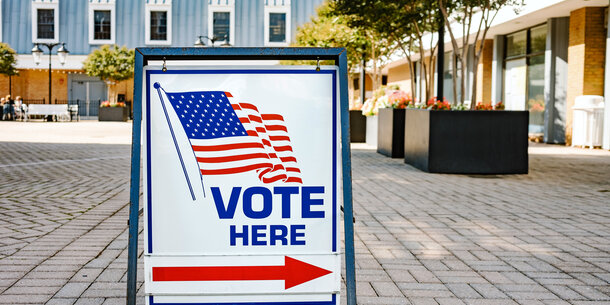This piece originally appeared in the Washington Post
The Supreme Court on Thursday delivered a severe blow to a crowning achievement of the civil rights movement and the nation’s best defense against racially discriminatory voting laws, the Voting Rights Act of 1965. The court’s ruling in Brnovich v. Democratic National Committee makes it substantially harder for voters to challenge such laws, hacking away at federal courts’ powers to protect Americans from efforts to impede their access to the ballot box. It’s the latest sign that if the voting rights of all Americans are to be defended, Congress, not the nation’s highest court, will have to provide that defense.
The case concerns two provisions of Arizona’s voting laws under Section 2 of the Voting Rights Act. One of these said that someone who cast their vote at the wrong precinct would have their entire ballot tossed out, even for races such as president or governor, where precinct would not be a factor. The other restricted the circumstances under which vote-by-mail ballots could be turned in on behalf of a nonrelative neighbor or friend.
Last year, the U.S. Court of Appeals for the 9th Circuit found both policies to be discriminatory because of the way they interact with the real-life conditions for minority voters in the state. For example, a brief filed by the Navajo Nation noted: “Arizona’s ballot collection law criminalizes ways in which Navajos historically participated in early voting by mail. Due to the remoteness of the Nation and lack of transportation, it is not uncommon for Navajos to ask their neighbors or clan members to deliver their mail.”
The Supreme Court, by a 6-to-3 vote split between the court’s conservatives and liberals, overturned the lower court, finding the burden on voters of color to be too “modest” to violate the Voting Rights Act in light of Arizona’s justifications for the laws.
But the damage done by the opinion reaches far beyond Arizona’s voters. Departing from precedent, which placed the “social and historical conditions” created by race discrimination at the heart of its Section 2 analysis, the court majority, in an opinion written by Justice Samuel A. Alito Jr., chose to focus instead on a new set of “guideposts.” Although the majority acknowledged that “differences in employment, wealth, and education” can enable some voting laws to have a disparate effect, it essentially threw up its hands, because it may be “virtually impossible for a State to devise rules that do not have some disparate impact.”
The court’s guideposts will make it much harder to challenge discriminatory laws. Because Congress last amended Section 2 in 1982, the majority pointed to voting practices from 1982 as a benchmark for “gauging whether the burdens imposed by a challenged [voting] rule are sufficient” to warrant concern today under the VRA. Putting aside the fact that the Voting Rights Act in no way ratifies 1982’s voting practices, consider the implications of this approach: Four decades ago, states didn’t use computers in election administration, and early or mail-in voting wasn’t as widely used. And across the country in recent cycles, voters of color have become a greater segment of the electorate.
The court didn’t deny that voters of color were disproportionately affected, but it still gave Arizona’s current voting obstacles a pass, because those obstacles affect only a small number of voters overall. The implication: Discrimination can stand, so long as there’s only a little bit of it.
And the court made it harder to challenge discriminatory hurdles to some methods of voting if other methods are available by saying that courts must consider these hurdles within the context of the “State’s entire system of voting.” In other words, an impediment to voting, even a racially discriminatory one, might be okay if there’s a plausible workaround available. It means, for instance, that state legislators seeking to eliminate early voting on Sundays, when Black churches throughout the country have often run successful souls-to-the-polls voter drives, could point to other means available to vote as a justification.
As it has done in the past, the majority paid only lip service to the reality of voting discrimination, saying: “No one suggests that discrimination in voting has been extirpated or that the threat has been eliminated.” But it both limited the tools available to respond to that threat and created loopholes, making discrimination likelier to occur. As Justice Elena Kagan noted in dissent: “What is tragic here is that the Court has (yet again) rewritten—in order to weaken—a statute that stands as a monument to America’s greatness, and protects against its basest impulses.”
The timing could not be worse. Republican legislators in states across the country have pushed a raft of increasingly aggressive new laws restricting access to the ballot box, many that would affect voters of color.
The ruling also demonstrates the hollowness of assurances from congressional Republicans who say existing federal laws adequately protect Americans’ voting rights. Senate Minority Leader Mitch McConnell (R-Ky.) publicly opposed a proposed bipartisan effort to restore the Voting Rights Act of 1965 to full strength, saying it was “unnecessary,” because “it’s against the law to discriminate in voting on the basis of race already.” Just last week, he and all his fellow Republican senators used the filibuster to block debate on the For the People Act, which would strengthen voting rights across the country.
Federal courts have for decades played a vital role in protecting voting rights for all Americans. But instead of serving as a bulwark against efforts by politicians to target disfavored voters, the court, led by Chief Justice John G. Roberts Jr., has in recent years steadily undercut voting rights.
In 2008, the Roberts court upheld the constitutionality of an Indiana voter ID law implemented on the basis of nonexistent voter fraud. In the 2013 decision in Shelby County v. Holder, the court gutted the Voting Rights Act’s essential provision requiring jurisdictions with a history of discrimination to obtain federal government “preclearance” for any changes to their voting policies to ensure they weren’t discriminatory.
Now, discriminatory policies like Arizona’s are not only unobstructed by preclearance, but they’re also upheld by the same court that did away with the preclearance requirement. (Indeed, the third-party ballot-collection prohibition at issue in Brnovich was withdrawn in 2011 during a preclearance review after Arizona’s elections director admitted that the provision was “targeted at voting practices in predominantly Hispanic areas.”) In the wake of Shelby County, laws restricting voting access proliferated across the country.
For decades, Section 2 enabled challenges to laws and practices that created racial disparities in voting access, considering all the relevant circumstances. In Brnovich, the court significantly blunted that tool. It did so in the midst of a deluge of new state legislation making it harder to vote, and on the cusp of a new redistricting cycle that — thanks in part to other recent Supreme Court decisions — will probably be rife with abuse.
Instead of waiting for a high court that has already shown its reluctance to protect voters from discriminatory efforts, the legislative branch can step in. Given the dearth of GOP support, this needed strengthening of our voting laws will probably require changing the Senate’s filibuster rules. That won’t be easy, as Senate Republicans have already used the filibuster to block debate on the For the People Act, and the John Lewis Voting Rights Advancement Act enjoys only the barest of bipartisan support. But Thursday’s decision raised the stakes: If Congress will not act, it will leave voters of color increasingly vulnerable to efforts to exclude them from our democracy.



